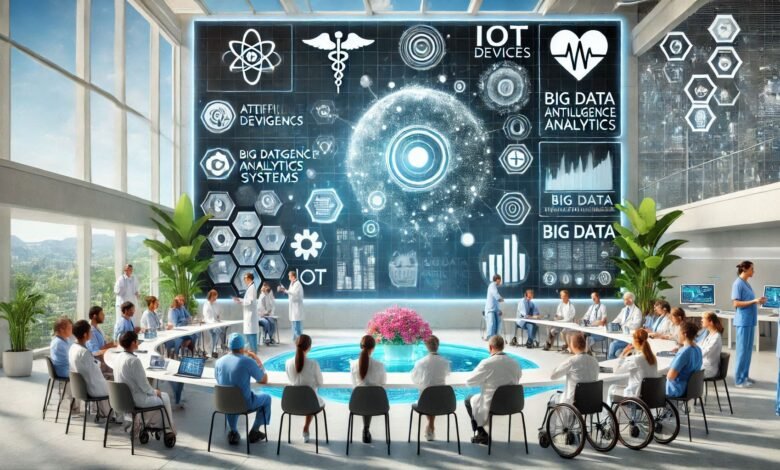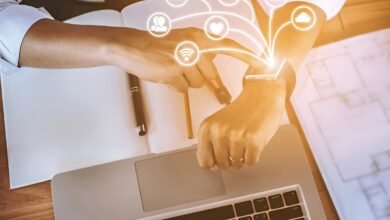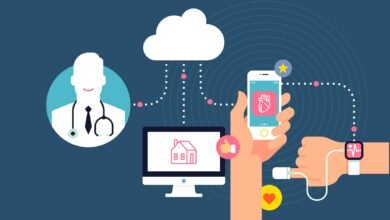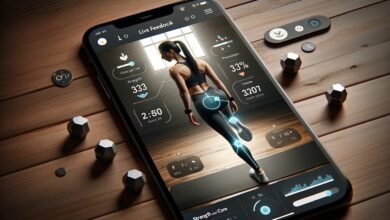IoT, AI and Big Data in Healthcare: Revolutionizing Patient Care
From enhancing patient monitoring to enabling predictive analytics, we’ll dive into the ways IoT, AI, and Big Data are driving smarter, more efficient, and patient-centric healthcare systems.

Imagine a healthcare system where wearable devices monitor your vitals in real time, AI diagnoses illnesses faster than doctors ever could, and big data predicts outbreaks before they happen. This isn’t the distant future—it’s the present reality as IoT (Internet of Things), AI (artificial intelligence), and big data converge to revolutionize patient care.
This article explores how these three technologies are reshaping healthcare. From enhancing patient monitoring to enabling predictive analytics, we’ll dive into the ways IoT, AI, and Big Data are driving smarter, more efficient, and patient-centric healthcare systems. Whether you’re a healthcare professional, a tech enthusiast, or someone seeking insights into the future of medicine, this guide will answer your questions and provide actionable knowledge.
1. The Convergence of IoT, AI, and Big Data in Healthcare
The integration of IoT, AI, and Big Data is transforming healthcare into a data-driven, efficient, and highly personalized industry. Individually, these technologies are powerful. Together, they create a synergistic system where:
- IoT collects real-time data from patients and medical equipment.
- AI analyzes that data, identifying patterns and making predictions.
- Big Data aggregates massive datasets to provide actionable insights.
The global shift towards smart healthcare technologies is fueled by the need for improved patient outcomes, cost efficiency, and accessibility. According to a report by Deloitte, the global IoT healthcare market is projected to grow from $72.5 billion in 2020 to $188.2 billion by 2028. This growth underscores the urgency of integrating these technologies into healthcare systems.
2. IoT in Healthcare: Revolutionizing Patient Monitoring
IoT Healthcare Devices: The Backbone of Real-Time Monitoring
IoT devices, such as wearables, connected sensors, and remote monitoring tools, are becoming indispensable in healthcare. These devices continuously collect data on vital signs, activity levels, and other health metrics, enabling:
- Real-Time Monitoring: Devices like smartwatches and glucose monitors provide immediate feedback on a patient’s health.
- Chronic Disease Management: Patients with diabetes, hypertension, or heart conditions benefit from 24/7 monitoring without frequent hospital visits.
- Reduced Hospitalizations: Early detection of health issues prevents emergencies, reducing the strain on healthcare systems.
Case Study: Remote Monitoring Success
A U.S.-based hospital implemented IoT devices for remote monitoring of heart failure patients. Over a year, readmissions dropped by 40%, demonstrating the potential of IoT to improve outcomes and cut costs.
Challenges in IoT Adoption
While IoT offers immense promise, challenges such as interoperability, data security, and device affordability hinder widespread adoption. Addressing these issues is critical to unlocking its full potential.
3. AI in Healthcare: Enhancing Diagnostics and Decision-Making
AI-Powered Diagnostics: Speed and Accuracy
AI is redefining diagnostics by analyzing medical images, identifying anomalies, and assisting healthcare professionals in decision-making. Key applications include:
- Medical Imaging: AI algorithms detect conditions like cancer, fractures, and retinal diseases with remarkable accuracy.
- Personalized Medicine: AI tailors treatment plans based on a patient’s genetic and clinical data.
- Predictive Analytics: Machine learning models predict disease progression, enabling proactive care.
Examples of AI Tools
- IBM Watson Health: assists oncologists by analyzing patient records and research papers.
- Google Health AI: Detects diabetic retinopathy with accuracy comparable to top specialists.
Ethical and Practical Concerns
Despite its advantages, AI faces challenges such as algorithmic bias, lack of transparency, and high implementation costs. Addressing these concerns is essential for AI to gain wider acceptance in healthcare.
4. Big Data in Healthcare: Unlocking Predictive Analytics
Big Data Aggregation: Turning Numbers into Insights
Big Data consolidates patient information from various sources, including:
- IoT devices
- Electronic Health Records (EHRs)
- Genomic databases
- Clinical trial results
Applications of Predictive Analytics
- Outbreak Management: Big Data helped identify COVID-19 hotspots, guiding resource allocation and containment strategies.
- Patient Readmission Reduction: Predictive models identify high-risk patients, enabling timely interventions.
- Treatment Optimization: Analyzing historical data helps doctors choose the most effective treatments for individual patients.
Data Volume Challenges
Healthcare data is expected to grow at a CAGR of 36% by 2025. Ensuring scalability and data quality remains a top priority for healthcare organizations.
5. Benefits of Integrating IoT, AI, and Big Data in Healthcare
The integration of IoT, AI, and big data offers numerous advantages:
- Improved Patient Outcomes: Early detection and personalized care lead to faster recoveries and better quality of life.
- Cost Reductions: Preventative care and predictive maintenance lower operational costs for healthcare providers.
- Operational Efficiency: AI-driven scheduling and resource management streamline workflows, allowing hospitals to serve more patients effectively.
Supporting Data
A study by Accenture found that AI applications could save the U.S. healthcare system $150 billion annually by 2026. These savings demonstrate the financial and operational benefits of adopting smart healthcare technologies.
6. Challenges and Ethical Considerations
While promising, the integration of IoT, AI, and big data is not without challenges.
- Data Security: Protecting sensitive patient data from breaches is a top concern.
- Interoperability: Ensuring devices and systems from different manufacturers work seamlessly is essential.
- Ethical Concerns: Issues like patient consent, algorithmic fairness, and data ownership must be addressed.
Potential Solutions
- Implementing blockchain for secure data sharing.
- Developing global standards for device interoperability.
- Creating AI ethics frameworks to guide responsible use.
7. The Future of IoT, AI, and Big Data in Healthcare
Emerging Trends
- Edge Computing: Reduces latency in IoT applications by processing data closer to its source.
- Federated Learning: Enables AI training across decentralized datasets while maintaining privacy.
- Real-Time Big Data Analysis: Improves decision-making in emergency care.
Predictions for the Next Decade
- Autonomous healthcare devices will become mainstream.
- AI-powered diagnostics will be available in primary care settings.
- Predictive analytics will save millions of lives by preventing diseases.
Preparing for the Future
Healthcare professionals and organizations must invest in training, infrastructure, and ethical guidelines to harness these advancements effectively.
Conclusion: A Smarter, Healthier Future Awaits
The convergence of IoT, AI, and Big Data is revolutionizing healthcare, enabling smarter diagnostics, improved patient monitoring, and predictive analytics. Despite challenges, these technologies promise a future where healthcare is more efficient, accessible, and personalized than ever before.











